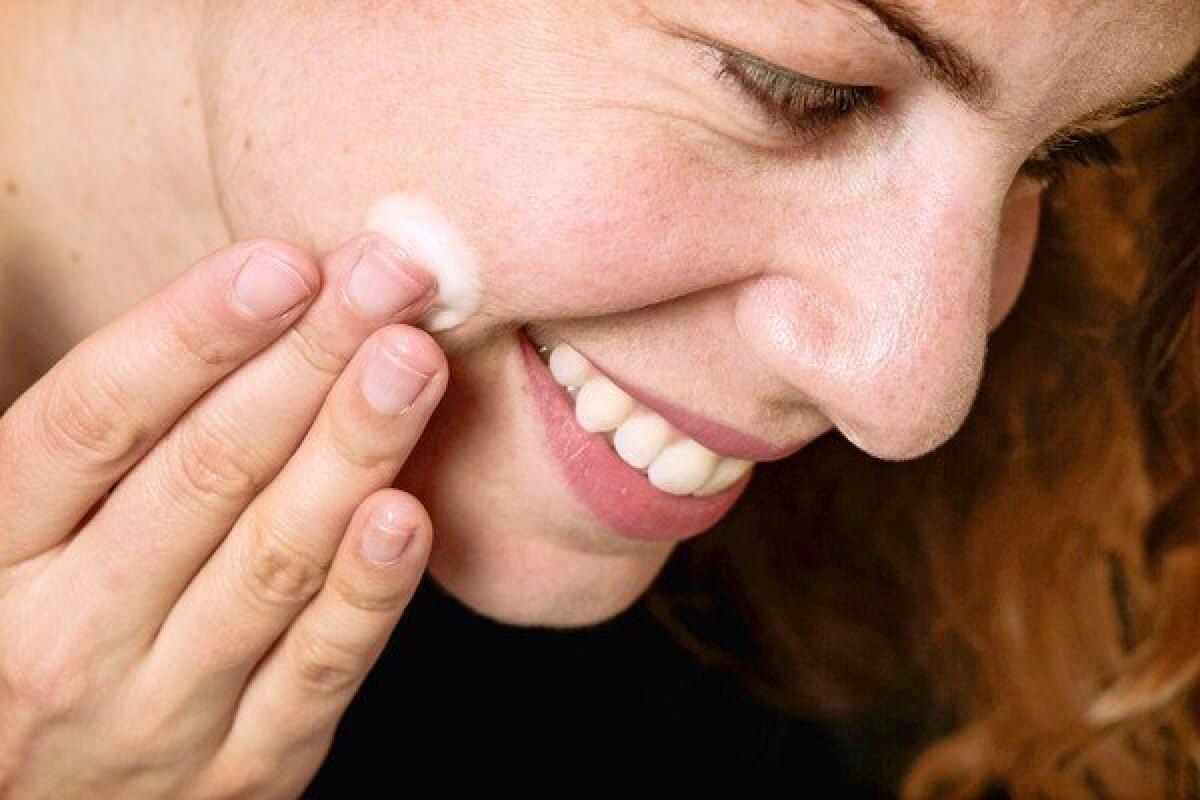Try This! Homemade moisturizer

It’s cooking class this week at Try This — for skin cream. If mixing your own cosmetics sounds like fun, here’s a recipe we think is worth the effort.
The concoction comes courtesy of Rosemary Gladstar, a Vermont-based herbalist and author of “Science and Art of Herbalism” and numerous other titles. “It turns out a really fluffy, beautiful white cream like what you would buy in any fancy cosmetic store,” she says.
The all-natural moisturizer calls for ingredients that can be found at health food stores or online at places such as Mountain Rose Herbs (www.mountainroseherbs.com) or Jean’s Greens Herbal Tea Works and Herbal Essentials (www.jeansgreens.com).
Here’s what you need:
¾ cup of a liquid oil, such as apricot, almond or grape seed
1/3 cup of coconut oil, cocoa butter or shea butter
¼ teaspoon of lanolin
½ to 1 oz of grated natural beeswax
2/3 cup of bottled or distilled water
1/3 cup of aloe vera gel
5-10 drops of a pure essential oil of your choice, for scent (we tried tangerine, but there are myriad possibilities, such as lavender, rose and jasmine).
Warm the first four ingredients in a double boiler, stirring until they’re melted together, then let them cool at room temperature for a few hours or overnight.
Combine the water, aloe vera and essential oils in a separate bowl. Put the cooled oil mixture in a blender on high speed, and gradually add the water mixture. Stop mixing when the ingredients have become creamy or the blender begins to choke.
Jessica Wu, a Los Angeles-based dermatologist and author of the book “Feed Your Face,” says that adding fruits such as cranberries, raspberries and strawberries to homemade skin treatments can help prevent wrinkles and premature aging due to their possession of a compound called ellegic acid. Mixing in green tea, she notes, has been shown to reduce damage caused by the sun such as redness, sunburn and broken capillaries.
It’s important to remember, though, that incorporating food means that the mixture will go bad in a few days, whereas it’s otherwise good for three to six months.
This face cream doesn’t have built-in sun protection — though Gladstar notes that sunflower oil can be used as the liquid oil for an SPF of about 15 — so it may best be used as a night cream.
And a word to the wise when applying this stuff: A little goes a long way.
More to Read
Eat your way across L.A.
Get our weekly Tasting Notes newsletter for reviews, news and more.
You may occasionally receive promotional content from the Los Angeles Times.






